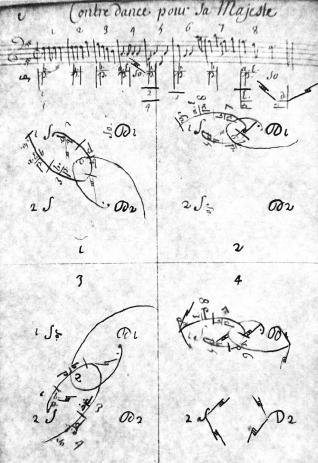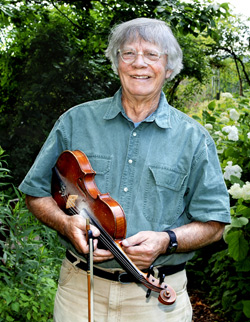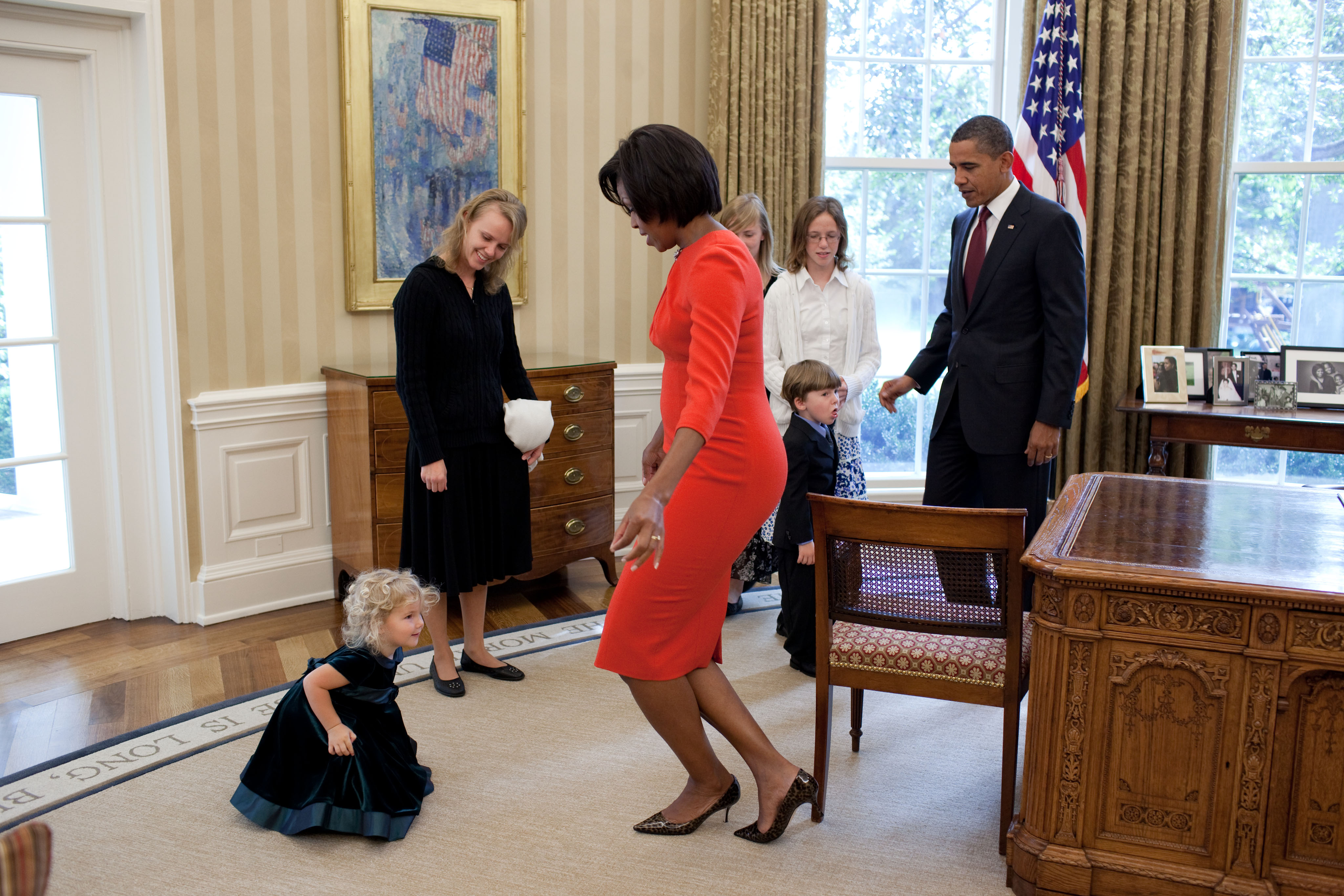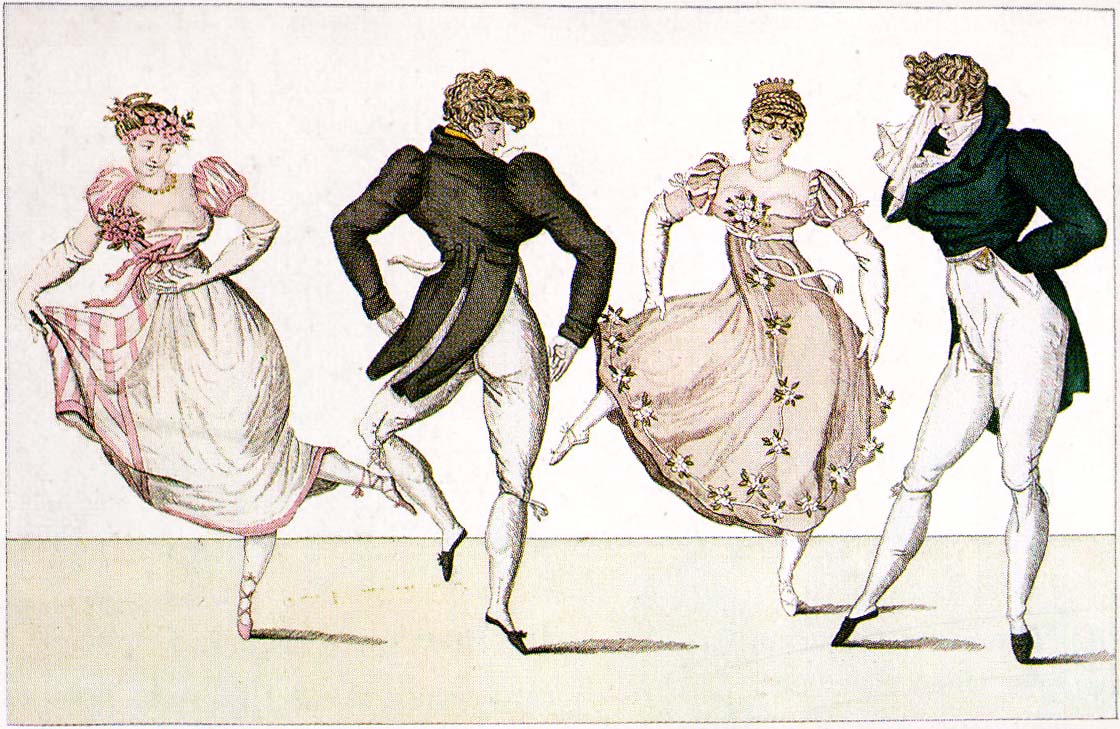|
Glossary Of Country Dance Terms
An alphabetic list of modern country dance terminology: * Active couple – for longways sets, the active couple is the couple nearest the head of the set within each ''minor set.'' There are always exactly as many active couples as ''minor sets.'' If the dance is "duple minor," this works out to every other couple, while in a "triple minor" it is every third couple. In older dances from the seventeenth and eighteenth centuries, the active couples do more complicated figures than the inactives, whence the name; however, this is not so usual in modern dances. Active couples may also be termed "first couple" or "the Ones," while inactives are "second couple/the Twos" and (only in a "triple minor" dance) "third couple/the Threes." * Arm right (or left) – couples link right (or left) arms and move forward in a circle, returning to their starting positions. * Back to back – facing another person, move forward ''passing'' right shoulders and ''fall back'' to place passing left ... [...More Info...] [...Related Items...] OR: [Wikipedia] [Google] [Baidu] |
Country Dance
A country dance is any of a very large number of social dances of a type that originated in the British Isles; it is the repeated execution of a predefined sequence of figures, carefully designed to fit a fixed length of music, performed by a group of people, usually in couples, in one or more sets. The figures involve interaction with your partner and/or with other dancers, usually with a progression so that you dance with everyone in your set. It is common in modern times to have a "caller" who teaches the dance and then calls the figures as you dance. Country dances are done in many different styles. As a musical form written in or time, the contredanse was used by Beethoven and Mozart. Introduced to South America by French immigrants, Country Dance had great influence upon Latin American music as contradanza. The ''Anglais'' (from the French word meaning "English") or ''Angloise'' is another term for the English country dance. A Scottish country dance may be termed an . ... [...More Info...] [...Related Items...] OR: [Wikipedia] [Google] [Baidu] |
Dosado
Do-si-do is a dance move. Description It is a circular movement where two people, who are initially facing each other, walk around each other without or almost without turning, i.e., facing in the same direction (same wall) all the time. In most cases it takes 6–8 counts to complete. The movement is basically defined by as follows: * dancers advance and pass right shoulders, * without turning each dancer moves to the right passing in back of the other dancer. At this moment the partners face away from each other, * then moving backwards dancers pass left shoulders returning to starting position. The actual steps vary in specific dances. Considering the amount of space in which to accomplish the figure, the partners might adjust their shoulders slightly diagonally to allow for less sideways movement during the shoulder passes. The advancing pass may also be by the left shoulders, although it will be called as a "left do-si-do" or a "see-saw". While executing this move, women ... [...More Info...] [...Related Items...] OR: [Wikipedia] [Google] [Baidu] |
Contra Dance
Contra dance (also contradance, contra-dance and other variant spellings) is a form of folk dancing made up of long lines of couples. It has mixed origins from English country dance, Scottish country dance, and French dance styles in the 17th century. Sometimes described as New England folk dance or Appalachian folk dance, contra dances can be found around the world, but are most common in the United States (periodically held in nearly every state), Canada, and other Anglophone countries. A contra dance event is a social dance that one can attend without a partner. The dancers form couples, and the couples form sets of two couples in long lines starting from the stage and going down the length of the dance hall. Throughout the course of a dance, couples progress up and down these lines, dancing with each other couple in the line. The dance is led by a caller who teaches the sequence of figures in the dance before the music starts. Callers describe the series of steps called "fi ... [...More Info...] [...Related Items...] OR: [Wikipedia] [Google] [Baidu] |
Contra Dance Form
Contra dance form describes the arrangement of dancers into contra dance sets and minor sets. There are various forms, and each dance's choreography specifies its formation. A caller's first instructions for each dance are usually to move the dancers into their starting positions according to the choreography for that dance. Formations Standard Contra dances are arranged in long paired lines of couples. A pair of lines is called a ''set''. Sets are generally arranged so they run the length of the hall, with the ''top'' or ''head'' of the set being the end closest to the band and caller. Correspondingly, the ''bottom'' or ''foot'' of the set is the end furthest from the caller. Couples consist of two people, traditionally but not necessarily one male and one female, referred to as the gent or gentleman and lady. Couples interact primarily with an adjacent couple for each round of the dance. Each sub-group of two interacting couples is known to choreographers as a ''minor se ... [...More Info...] [...Related Items...] OR: [Wikipedia] [Google] [Baidu] |
Scottish Country Dance
Scottish country dance (SCD) is the distinctively Scottish form of country dance, itself a form of social dance involving groups of couples of dancers tracing progressive patterns. A dance consists of a sequence of figures. These dances are set to musical forms (Jigs, Reels and Strathspey Reels) which come from the Gaelic tradition of Highland Scotland, as do the steps used in performing the dances. Traditionally a figure corresponds to an eight-bar phrase of music. Country dancing, which is arguably a type of folk dancing, first appears in the historical record in 17th-century England. Scottish country dancing as we know it today has its roots in an 18th-century fusion of (English) country dance formations with Highland music and footwork. It has become the national ballroom dance form of Scotland, partly because "Caledonian Country Dances" became popular in upper-class London society in the decades after the Jacobite rising of 1745. As early as 1724 there was a published c ... [...More Info...] [...Related Items...] OR: [Wikipedia] [Google] [Baidu] |
Curtsey
A curtsy (also spelled curtsey or incorrectly as courtsey) is a traditional gendered gesture of greeting, in which a girl or woman bends her knees while bowing her head. In Western culture it is the feminine equivalent of bowing by males. Miss Manners characterizes its knee bend as deriving from a "traditional gesture of an inferior to a superior." The word "curtsy" is a phonological change from "courtesy" known in linguistics as syncope. Overview According to Desmond Morris, the motions involved in the curtsy and the bow were similar until the 17th century, and the sex differentiation between the actions developed afterwards. The earlier, combined version is still performed by Restoration comedy actors. In more formal variants of the curtsy, the girl/woman bends the knees outward (rather than straight ahead), often sweeping one foot behind her. She may also use her hands to hold her skirt out from her body. In the Victorian era, when women wore floor-length, hooped skirts, th ... [...More Info...] [...Related Items...] OR: [Wikipedia] [Google] [Baidu] |
Bowing (social)
Bowing (also called stooping) is the act of lowering the torso and head as a social gesture in direction to another person or symbol. It is most prominent in Asian cultures but it is also typical of nobility and aristocracy in many European countries. It is also used in religious contexts, as a form of worship or veneration. Sometimes the gesture may be limited to lowering the head such as in Indonesia, and in many cultures several degrees of the lowness of the bow are distinguished and regarded as appropriate for different circumstances. It is especially prominent in Nepal, India, Thailand, Laos, Vietnam, China, Korea, and Japan, where it may be executed standing or kneeling. Some bows are performed equally by two or more people while others are unequal – the person bowed to either does not bow in return or performs a less low bow in response. A nod of the head may be regarded as the minimal form of bow; forms of kneeling, genuflection, or prostration which involves the hands ... [...More Info...] [...Related Items...] OR: [Wikipedia] [Google] [Baidu] |
Society For Creative Anachronism
The Society for Creative Anachronism (SCA) is an international living history group with the aim of studying and recreating mainly Medieval European cultures and their histories before the 17th century. A quip often used within the SCA describes it as a group devoted to the Middle Ages "as they ought to have been", choosing to "selectively recreate the culture, choosing elements of the culture that interest and attract us". Founded in 1966, the non-profit educational corporation has over 20,000 paid members as of 2020 with about 60,000 total participants in the society (including members and non-member participants). History The SCA's roots can be traced to a backyard party of a UC Berkeley medieval studies graduate, the author Diana Paxson, in Berkeley, California, on May Day in 1966. The party began with a "Grand Tournament" in which the participants wore helmets, fencing masks, and usually some semblance of a costume, and sparred with each other using weapons such as plywood ... [...More Info...] [...Related Items...] OR: [Wikipedia] [Google] [Baidu] |
Cecil Sharp
Cecil James Sharp (22 November 1859 – 23 June 1924) was an English-born collector of folk songs, folk dances and instrumental music, as well as a lecturer, teacher, composer and musician. He was the pre-eminent activist in the development of the folk-song revival in England during the Edwardian period. According to ''Folk Song in England'', Sharp was the country’s "single most important figure in the study of folk song and music." Sharp collected over four thousand songs from untutored rural singers, both in South-West England and the Southern Appalachian region of the United States. He published an extensive series of song books based on his fieldwork, often with piano arrangements, and wrote an influential theoretical work, English Folk Song: Some Conclusions. He also noted down surviving examples of English Morris dance, Morris dancing, and played an important role in the revival both of the Morris and English country dance. In 1911, he co-founded the English Folk Dance So ... [...More Info...] [...Related Items...] OR: [Wikipedia] [Google] [Baidu] |
English Country Dance
A country dance is any of a very large number of social dances of a type that originated in the British Isles; it is the repeated execution of a predefined sequence of figures, carefully designed to fit a fixed length of music, performed by a group of people, usually in couples, in one or more sets. The figures involve interaction with your partner and/or with other dancers, usually with a progression so that you dance with everyone in your set. It is common in modern times to have a "caller" who teaches the dance and then calls the figures as you dance. Country dances are done in many different styles. As a musical form written in or time, the contredanse was used by Beethoven and Mozart. Introduced to South America by French immigrants, Country Dance had great influence upon Latin American music as contradanza. The ''Anglais'' (from the French word meaning "English") or ''Angloise'' is another term for the English country dance. A Scottish country dance may be termed an . ... [...More Info...] [...Related Items...] OR: [Wikipedia] [Google] [Baidu] |



.jpg)

